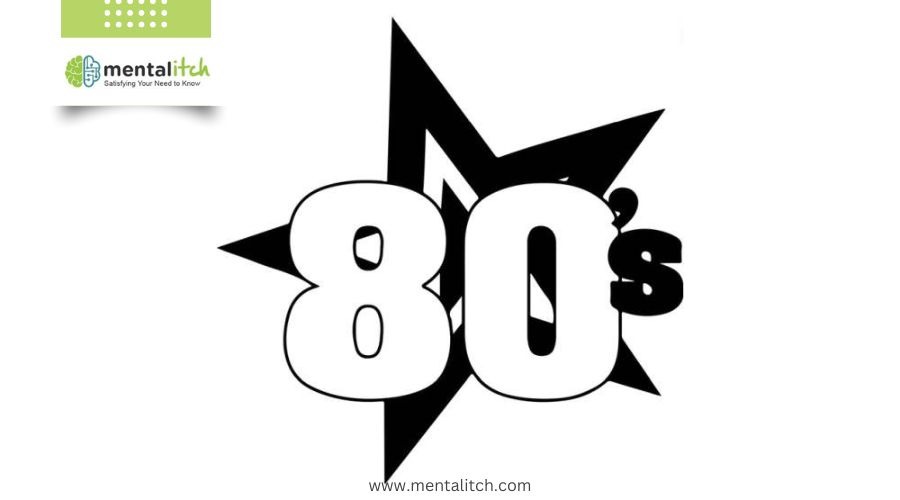In the 1980s, television was more than just a box in the living room—it was a cultural phenomenon that shaped the way people thought, dressed, and talked. From iconic sitcoms like “The Cosby Show” to the birth of MTV and its music videos, television played a pivotal role in defining the pop culture of the decade.
Television didn’t just entertain; it influenced the way people lived their lives. Advertisements and commercials convinced viewers to buy products they didn’t even know they needed, while TV shows set fashion trends that are still remembered and imitated today.
Influence of Television on Pop Culture of the 80s
Let’s explore the influence of television on 80s pop culture, uncovering shows, music videos, advertising, and fashion that defined a decade.
Sitcoms
Most importantly, the era of TV just started to boom, which is why this became the most important influence on the pop culture of the 80s. Sitcoms in the 1980s had a significant impact on pop culture, influencing the way people viewed relationships, family dynamics, and humor. These shows presented diverse characters and storylines that resonated with audiences. For example, some sitcoms portrayed the importance of community and camaraderie, while others challenged stereotypes and explored generational divides.
Shows like “Cheers,” “The Cosby Show,” and “Family Ties” dominated the airwaves. These shows became cultural touchstones, drawing in millions of viewers each week with their relatable characters and hilarious storylines.
“Cheers,” set in a Boston bar, showcased the witty banter of its diverse cast, including bartender Sam Malone and waitress Diane Chambers. “The Cosby Show” broke new ground by featuring an affluent African-American family, the Huxtables, led by patriarch Dr. Cliff Huxtable.
Iconic Dramas and Cartoons
TV shows and dramas of the 1980s often tackled complex themes and societal issues, pushing the boundaries of storytelling. They captivated audiences with their portrayal of wealth, power, and personal struggles. These dramas showcased opulence and drama in the lives of various characters.
“Dallas” captivated audiences with its portrayal of wealth and power in the Ewing family. “Dynasty” showcased drama in the lives of the rich and powerful. “Hill Street Blues” revolutionized the police drama genre by focusing on officers’ personal lives and challenges.
Cartoons and animated series in the 1980s were more than just entertainment for children—they were cultural phenomena that influenced fashion, toys, and even language. These shows often featured imaginative worlds and fantastical adventures, sparking the imagination of young viewers. Through colorful characters and engaging stories, cartoons of the 1980s taught important life lessons about friendship, courage, and the importance of standing up for what is right.
TV personalities of the 1980s became larger-than-life figures who captured the hearts and minds of audiences. Their shows not only entertained but also educated, informing viewers about current events, trends, and issues. These personalities became role models for many, inspiring people to pursue their dreams and make a positive impact on the world.
Rise of MTV
MTV, launched in 1981, revolutionized the music industry by becoming the first 24-hour music video channel. It quickly gained popularity among young audiences, becoming a cultural phenomenon and changing the way music was consumed and promoted. MTV’s innovative format of airing music videos non-stop made it a trendsetter in pop culture.
Music videos in the 1980s had a profound impact on pop culture, influencing fashion, dance, and visual storytelling. They became a powerful tool for artists to express their creativity and connect with fans on a deeper level. Music videos also played a significant role in breaking racial barriers and promoting diversity in the music industry.
Michael Jackson’s “Thriller” (1983) was a groundbreaking music video, directed by John Landis, set a new standard for music videos with its cinematic quality and elaborate dance sequences. “Thriller” became synonymous with the 80s and is widely regarded as one of the greatest music videos of all time.
Madonna’s “Like a Prayer” (1989) was another popular yet controversial music video that addressed themes of religion and race, sparking debate and discussion. “Like a Prayer” showcased Madonna’s ability to push boundaries and challenge societal norms, solidifying her status as a pop icon.
Advertisement and Commercials
Advertising in the 1980s was characterized by memorable campaigns that left a lasting impact on popular culture. Brands like Coca-Cola and Apple created ads that transcended traditional advertising by telling compelling stories that resonated with viewers. Coca-Cola’s “Mean Joe Greene” commercial, which aired during Super Bowl XIV in 1980, portrayed a heartwarming interaction between a football player and a young fan, showcasing the power of kindness and generosity.
Apple’s “1984” commercial, aired during the Super Bowl in 1984, depicted a dystopian future broken by the introduction of Apple’s Macintosh computer, emphasizing the brand’s revolutionary approach to technology.
Commercials in the 1980s played a significant role in shaping consumer behavior by creating aspirational lifestyles and influencing purchasing decisions. Advertisers used emotional appeals to connect with consumers, tapping into their desires and aspirations.
Commercials also introduced new products and technologies, driving consumer demand and shaping market trends. For example, the introduction of the Sony Walkman in the early 1980s was accompanied by a series of commercials that portrayed the device as a must-have accessory for music lovers, contributing to its popularity and success.
Celebrities were a popular choice for advertising in the 1980s, with many brands using them to endorse products and create brand awareness. Celebrities like Michael Jackson, Cindy Crawford, and Michael Jordan became synonymous with certain brands, adding credibility and appeal.
For example, Michael Jackson’s partnership with Pepsi in the 1980s resulted in a series of iconic commercials that not only promoted the brand but also elevated Jackson’s status as a cultural icon. Similarly, Cindy Crawford’s partnership with Pepsi in the 1990s helped reinvigorate the brand’s image and appeal to a younger audience.
Influence of TV Shows on Fashion
TV shows played a significant role in shaping fashion trends of the 80s. Characters like Alex P. Keaton from “Family Ties” popularized preppy, conservative styles, while the cast of “Miami Vice” introduced a trendier, more casual look. Shows like “Dynasty” and “Dallas” showcased luxurious, high-end fashion, inspiring viewers to emulate the glamorous lifestyles of their favorite characters.
The 1980s were known for their bold and unconventional hairstyles and clothing trends. Big hair, neon colors, shoulder pads, and leg warmers were all the rage, influenced by pop stars like Madonna and Cyndi Lauper. These trends reflected the vibrant and dynamic nature of the decade, with fashion becoming a form of self-expression and rebellion.
Personalities like Madonna, with her edgy, punk-inspired look, and Princess Diana, with her elegant and sophisticated style, set trends that were followed by millions around the world. Their influence extended beyond the screen, shaping the way people dressed and expressed themselves.
Final Words
As the 1980s came to a close, TV had left its mark on how people lived and dressed. It wasn’t just about watching shows; it was about being part of them. The clothes people wore, the music they listened to, and even the way they thought were all shaped by what they saw on TV. It was more than just entertainment; it was a whole way of life. The 80s showed us that TV wasn’t just something you watched for fun; it was a powerful force that changed the world of pop culture forever.




